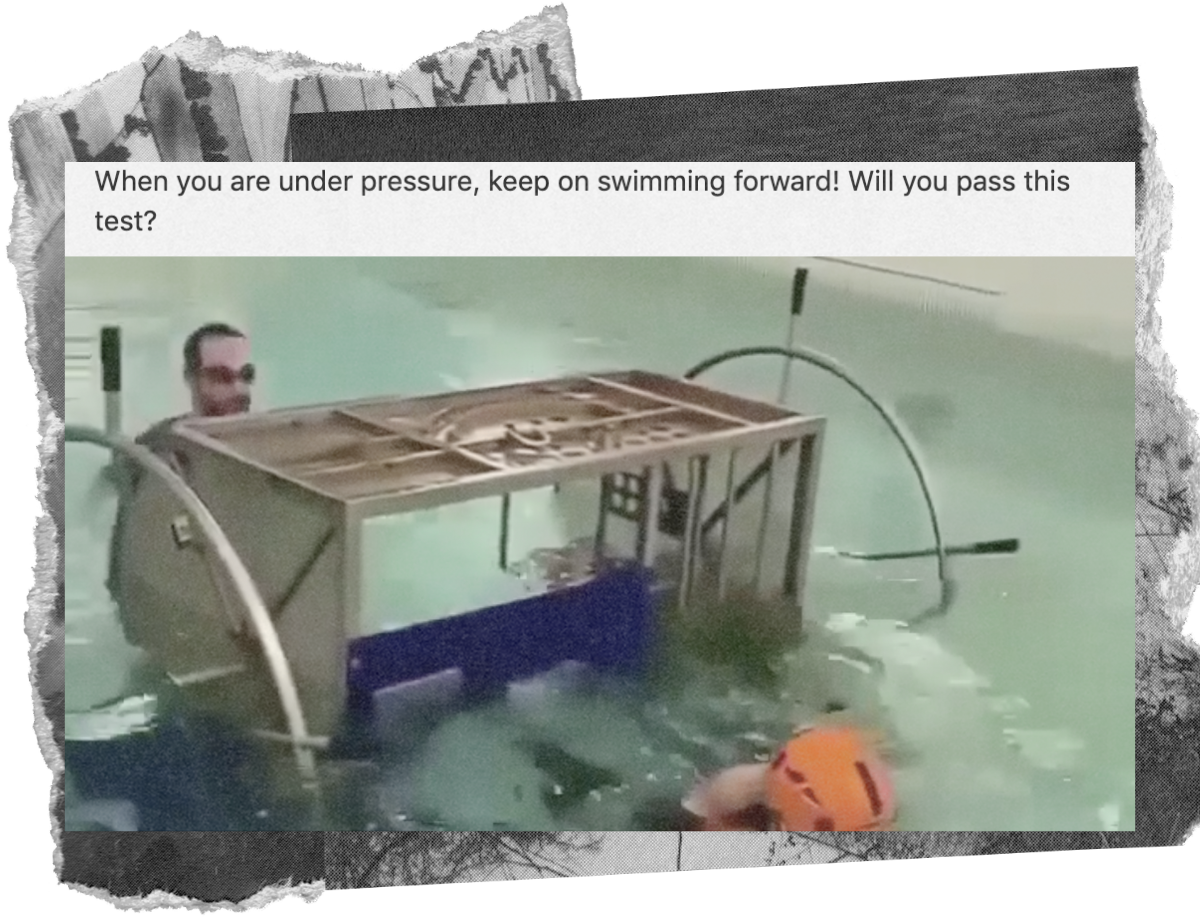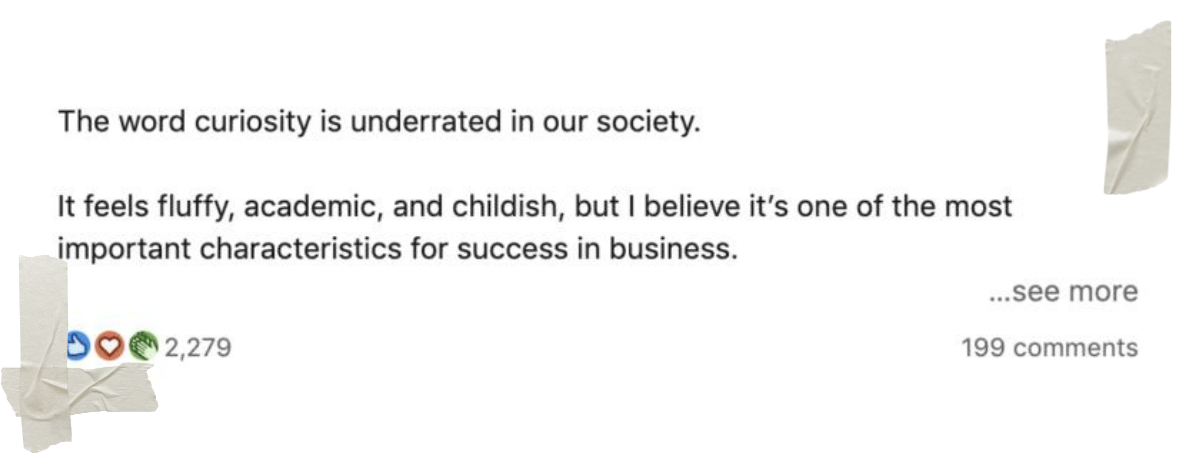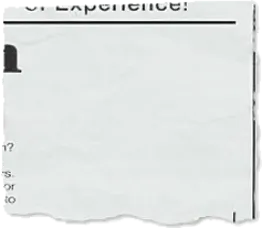

LinkedIn. Once touted as a social media platform for professionals where you could share and find information, insight and expertise in almost any industry, has now become a cesspit of inspirational quotes, images and stories that no one is ever quite sure are real.
Of course, every social network has evolved over the years and LinkedIn is no different. From promoting its platform as a place to publish meaningful and insightful content to tapping into a wealth of talent to strengthen your business – whether it’s finding new employees or partner services – LinkedIn definitely has a lot to offer if you can find your way through the increasing amount of bullshit being posted every day.
It’s not easy, but I’m here to help you filter the trash and find the people, products and services that actually matter.
What is storytelling?
Why do all these crappy, annoying posts show up in your newsfeed?
The first thing you need to understand is, what is storytelling and how powerful is it in helping us connect with others?
As readers, we want to establish a connection with whoever is speaking to us, whether that’s professional or emotional, and with a specific intent. If you need a product to solve a problem, for example, there’s no shortage of options you can choose. Reviews help, as does price, but we’re drawn to products that are part of a story that show us exactly how it’ll help. It makes our life easier, and we’re then drawn to that author or brand again in the future if things work as expected.
The same is true with these inspirational or motivational posts you see. There’s a lot of personal inflections and situations that people have been through before. The language is vague but emotional, designed to create that link that you’ll keep reading. You’ll have some experience with those feelings – or know someone who has – and you’re drawn in that way.
Those who don’t relate will scroll on by, either because they’ve not experienced it, they’ve experienced it and have different feelings about the topic or because they’ve recognised the words and phrases designed to draw them in and ignore the pull.
I could write a much longer blog just on what storytelling is, but that’s the basics of it.
It starts with your connections
Now that you know a little about storytelling and how it draws people in, you need to look at your own list of connections.
Some people on LinkedIn are just there for the numbers. They want as many connections as possible, because this acts like proof that they should be listened to as influencers or people of authority. That’s how it works on other social networks, right?
They’re not going to respond to your posts, and they’re not going to help with any queries you have beyond what will look good for them and their image. With so many connections, it’s unlikely they’ll even see anything you post.
For them, having so many contacts means there’s more chance that people will see their content, however.
Quality or quantity
There’s the view that accepting any request that comes your way will open doors for you in the future when you actually need a particular skill or piece of insight – but can you actually remember every single connection and their areas of expertise? I doubt it.
For me, it’s about quality over quantity. I’d rather have a smaller network with more meaningful connections I speak to, help and who help me when needed rather than a sea of fish that swim away every time I drop a lure in the water.
I can filter all my requests this way. Are they in my industry? Can they help me achieve my goals? Can I offer them something in return? Is their content valuable? These questions help me thin out the herd and it’s worth going through your contacts every so often with this in mind.
As soon as I realise someone just wants to sell me something or try to recruit me for a role that has no relevance to me or my career, they’re out. I don’t apologise for this. It’s my network and I don’t owe anyone any explanation how I grew it or who’s a part of it.
Dealing with bullshit content
With your list of connections under control, it’s time to focus on what people are sharing. In your newsfeed, you’re going to see not only what your connections share but also what they comment on and react to. No matter how relevant it is to you.

Sure, you can become a social media vigilante and come down on any piece of fluff content you want, but that’s going to earn you a reputation very quickly. If that’s the image you’re aiming for, have at it! Be that person, but don’t expect a huge swathe of followers.
In fact, it may switch people off as you’re seen to be not caring about what they do. Rightly or wrongly, calling out such crappy content isn’t always seen as a good thing.
Shame.
Skipping over crappy content from a LinkedIn post
So, what do you need to look out for?
You can see the current job title of everyone on your newsfeed, which can help you filter out some people, but the rules of storytelling are going to be really important here.
Influencers are going to try and draw you in – whether they use an image or not. The majority of their LinkedIn posts are going to be generic feel good stories that guilt you into reacting. Nothing they share is going to make any difference to your job or career.

Personal success stories are popular, too. They start with a tragedy or disaster to hook you in, and most are personal situations, but it informs what happened to their past job. These posts will end with a motivational line along the lines of never giving up. Droll.
You’ll also see quotes – sometimes taken from the media – often taken out of context, to drum up reactions.

The LinkedIn post content you want will come from people with job roles like yours, and they’ll lead with a line or two about a task or client they’ve worked on. This includes ideas and expertise and will end with proven results that are worth celebrating.
Absolutely support people succeeding in hard times or who have overcome something big, but it’s a bandwagon everyone is jumping on. Leaving a job isn’t always a reason to throw someone under the bus just because you disagreed with them. If something is wrong, or you want to challenge opinions and invite change, do so – but use data, facts and experience together, rather than a sob story about your manager not listening to you that “made” you leave.
They didn’t. It was your choice, and all power to you, but admit that you didn’t fit that work style and you wanted something better for yourself.
The rise of Linkedin “Influencers”
This type of content has existed for a while, yes, but it has been highlighted and exacerbated by the rise of influences. Unfortunately, LinkedIn as a platform hasn’t escaped their presence.
One reason influencers do so well is because they are faces to be talked to, and audiences are more likely to relate and listen to another person over a faceless brand. The problem is, these influencers are in it for themselves. They want deals, endorsements and to make money from you. They’ll do anything to get that.
It’s clear to see why influencer marketing is seeing huge growth year after year. More companies are looking to tap into this and a greater number of people are tapping into the market. Just in 2021, it is expected to grow in worth to $13.8 billion – that’s a massive $4 billion increase from 2020.
Why should you watch out for influencers?
These LinkedIn influencers – or any influencers, for that matter – are a business themselves, so everything they say should be taken with a (large) pinch of salt. They’ll support anyone that pays. That means they have little loyalty to the themes – and brands – they represent at any given time.
In short, you can’t always believe they mean what they say. To understand their intent is to understand they want signups, sales, clicks or whatever it is they get paid for.
Think about how you use your own social media. We want validation that people like our content and support us. Likes and shares are a big part of that, but if you share something like a petition, you obviously want people to sign it. If you write a blog, you want people to read it. If you have something to sell, you want people to buy it.
It’s the same principle with influencers. The difference is they get paid for you making that action and they’ll work with whoever offers them the best deal. Business-wise, it’s a model. Morally? We will let you decide.
Anyone can call themselves an influencer. There’s no expertise or accreditation for it. That’s why the substance behind what they say can be questionable. They don’t have the expertise of someone who’s worked in that industry for years, runs trials and shares results – which is much more helpful and useful to your own career.
Think about that for a minute. Who are you spending more time on, the expert or the influencer?
Standing out from the crowd
Now you know how to spot the bullshitters on your newsfeed, what can you do to stand out?
It all depends on who you want to be and how you want to be seen.
If you want to attract people in your industry that can offer insight and ideas similar to what you do, create content that they will find useful. Use data from your campaigns or projects that prove your methods or ideas, but be open to other views and invite discussion. A social network is truly at it’s best when discourse flows and everyone involved can grow – much more than 400 comments of “congratulations” or “wish you all the best.” Make sure you engage in those discussions and get involved in the comments and discussions on other people’s content. Ask questions and support their successes and you’ll realise just how valuable LinkedIn can really be.
You might find some great collaborators for more research or projects. You might find new employees or even employers one day. It could also lead to the formation of your own business and brand.
Whatever you choose to do, own it. Make it your own. Just skip the flat, motivational, inspirational bullshit. Please.









